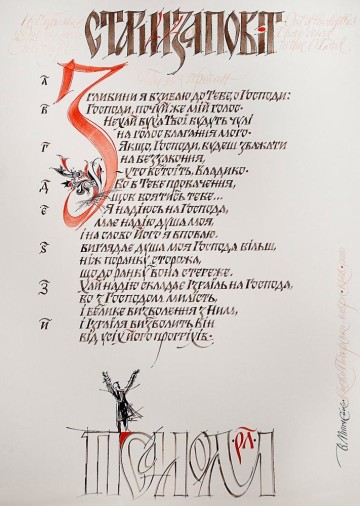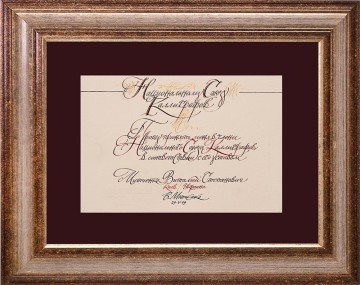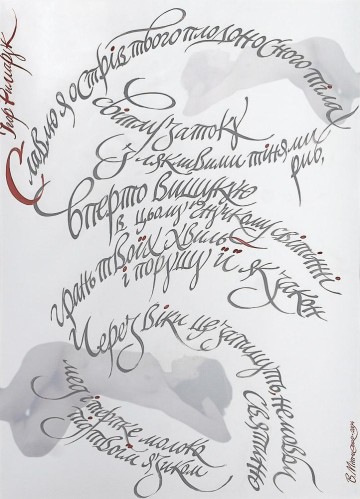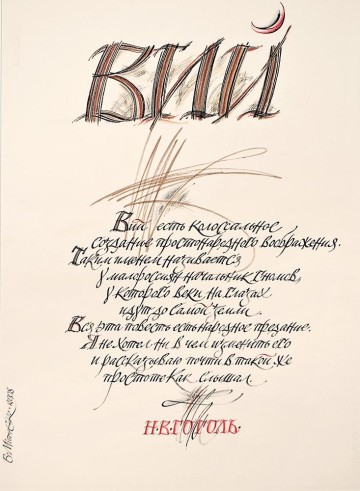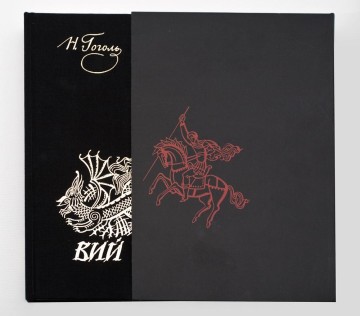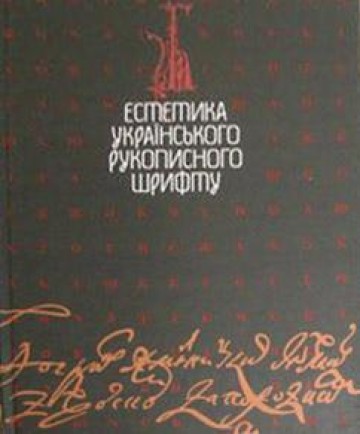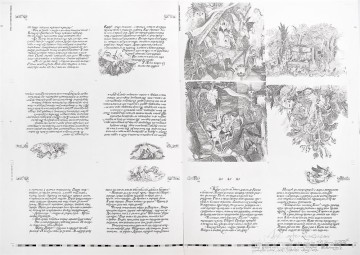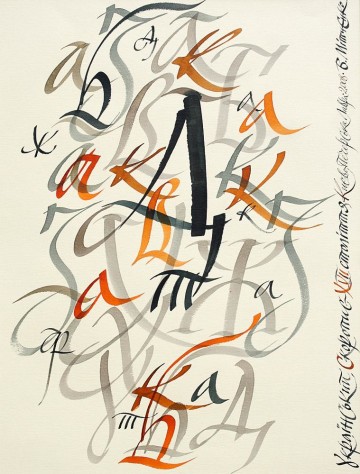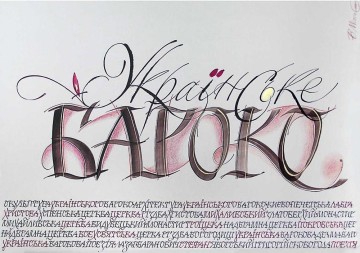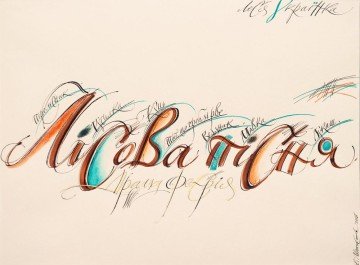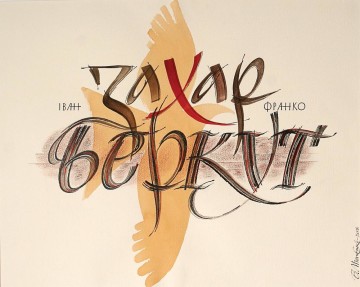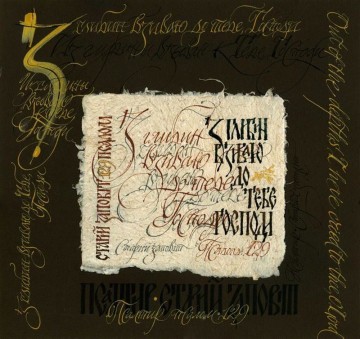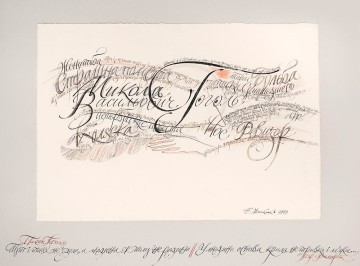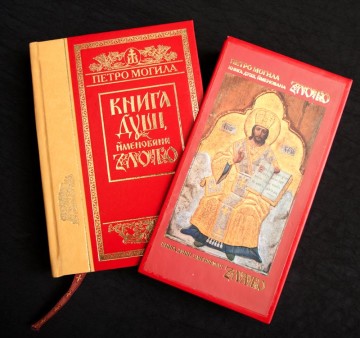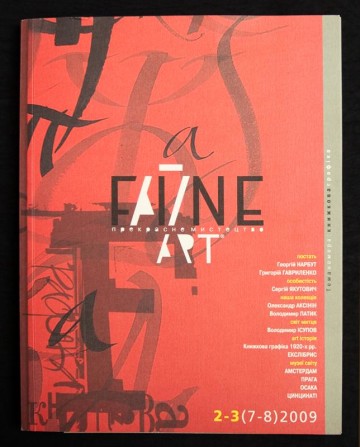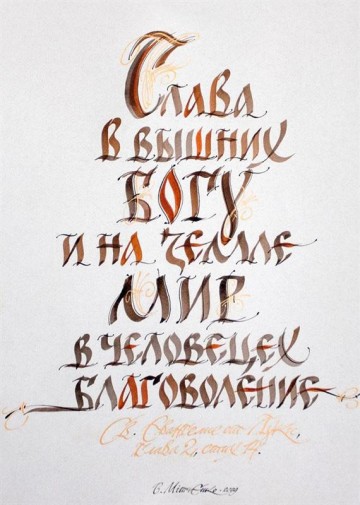Vitaly Mitchenko
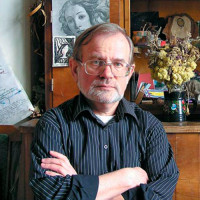
Vitaly Mitchenko
Kyiv, Ukraine
Calligraphy Artist, assistant professor at the Kyiv National Academy of Fine Arts and Architecture, member of the Union of Artists of Ukraine.
Calligraphy is a Cardiogram of Time
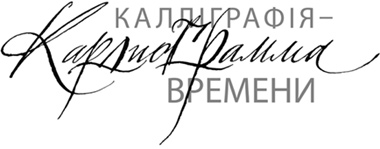
At first, calligraphy was just a component of material culture to me. But gradually increasingly new prospects opened up in the world of beautiful writing to me. While working at the collection of poems of the Baroque Ukrainian poems, paleographic materials on the history of the Ukrainian calligraphy of the 17th-18th centuries came to my hands. This is a huge layer of Old Slavonic cultural legacy, which is poorly studied by artists and which has the right to exist in today’s semiosphere (B. Gerchuk).
The study of easel calligraphy is related to the devotion to poetic world to me. Calligraphy is compared with music, ballet, dance – it is still poetry to me. Even a type-setting text of a poem often looks as a beautiful graphic structure, and it gets a new life in a lucky calligraphic interpretation. In my opinion, calligraphy and original handwriting is a method of self-expression of an artist (and any person in general; yet the nature and mood of the writing is also disclosed in household writing). The artist interprets by his/her handwriting individual words and phrases, changes the rhythm of the line, the writing tempo, the phrase configuration, using special weight and colour sometimes. Yet the author of words remains the owner of the text.
But sometimes the calligrapher’s hand ceases to obey the literature and turns letters into abstraction – the world gets drowned in the depth of sub-conscience. Abstract calligraphy for me is hieroglyphs / trees against the background of the autumn skies, it is the silence of dry grass getting drowned in the finest cobweb, it is graffiti on ancient boulders and walls of cathedrals. Their language cannot be understood but graphic pulsation of lines and spatial rhythm can be felt.
Sometimes the Letter starts to dictate its conditions to the phrase – the Letter Symbol, the Letter Sign, the Letter Word, the Letter Alliteration. The letter dominates the phrase and prompts an original plastic move to an artist.
I am very much interested in how writers treat the graphics of letters. Let’s remember the unforgettable Akaky Akakievich from Gogol’s Great Coat or reflections of Prince Myshkin from Dostoevsky’s novel or a less known image – a description of the uryadnik’s figure made of letters phi and kher in A. Pushkin’s Story of Goryukhin Village, or the hymn to Cyrillic letters in A. Voznesensky’s poem entitled The Cyril and Methodius Melody or a phrase from I. Brodsky’s poem: “The garden is as dark as a tightly set ж. This list is not exhaustive. Writers remind us, artists, that a letter is not only an abstract configuration but also an image. Calligraphy for me is a source of inspiration when I am working on the font design of books. This is a possibility to improvise with the text. Finally, the historical Cyrillic calligraphy is an extensive field for studying the original traces of letters in order to adapt them to the modern design.
Author works
Psalm 130 from the Book of Psalms of the Old Testament
Hand-made paper, painted in paste, ink, ekolin, gouache, gold, watercolour, broad-nib wooden stick, broad-nib brush, sharp-pointed brush, sharp-pointed nib pen, 72x52 cm, 2010Application to become a member of the National Union of Calligraphers
Ink, color pencils, brush, broad-nib pen, crow-quill pen, 29,8х21,1 cm, 2009A calligraphic paper on the subject of the I. Rymaruk’s poetry
Gouache, brush, photo printing, 50x70 cm, 2004Calligraphy paper on the subject of the tale by N. Gogol “Viy”
Ink, broad-nib pen, color pencils, 55x74 cm, 2008Calligraphy paper on Ukrainian Cyrillic Cursive Handwriting
Paper, black ink, ecolin (color ink), broad brush, broad-nib pen, 68x51 cm, 2008Calligraphy paper. Drama-extravaganza by L. Ukrainka "Forest song"
Paper, color watercolor pencils, bronze, black ink, ecolin (color ink), broad brush, sharp-pointed nib pen, 62х45 cm, 2008A calligraphic paper about a tale by Ivan Franko “Zakhar Berkut”
Gouache, ink, color pen, brush, crow-quill pen, 64х49 cm, 2008Calligraphic sheet on the subject of Psalm No 129 (Psalter) in Russian, English, and Latin
Broad-nib pen, crow-quill pen, brush, ink, gouache, gold (watercolour), hand-made paper (21x18 cm), paper, coloured in paste (37x35 cm), 2009Calligraphic sheet devoted to the 200th anniversary of Nicolai Gogol
Hand-made paper, painted in paste, sharp-pointed nib pen, broad-nib pen, crayon, 38x56 cm, 2010When there are no words left, the meaning is still preserved.
